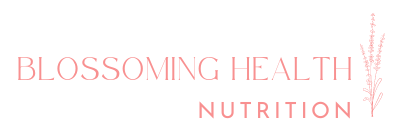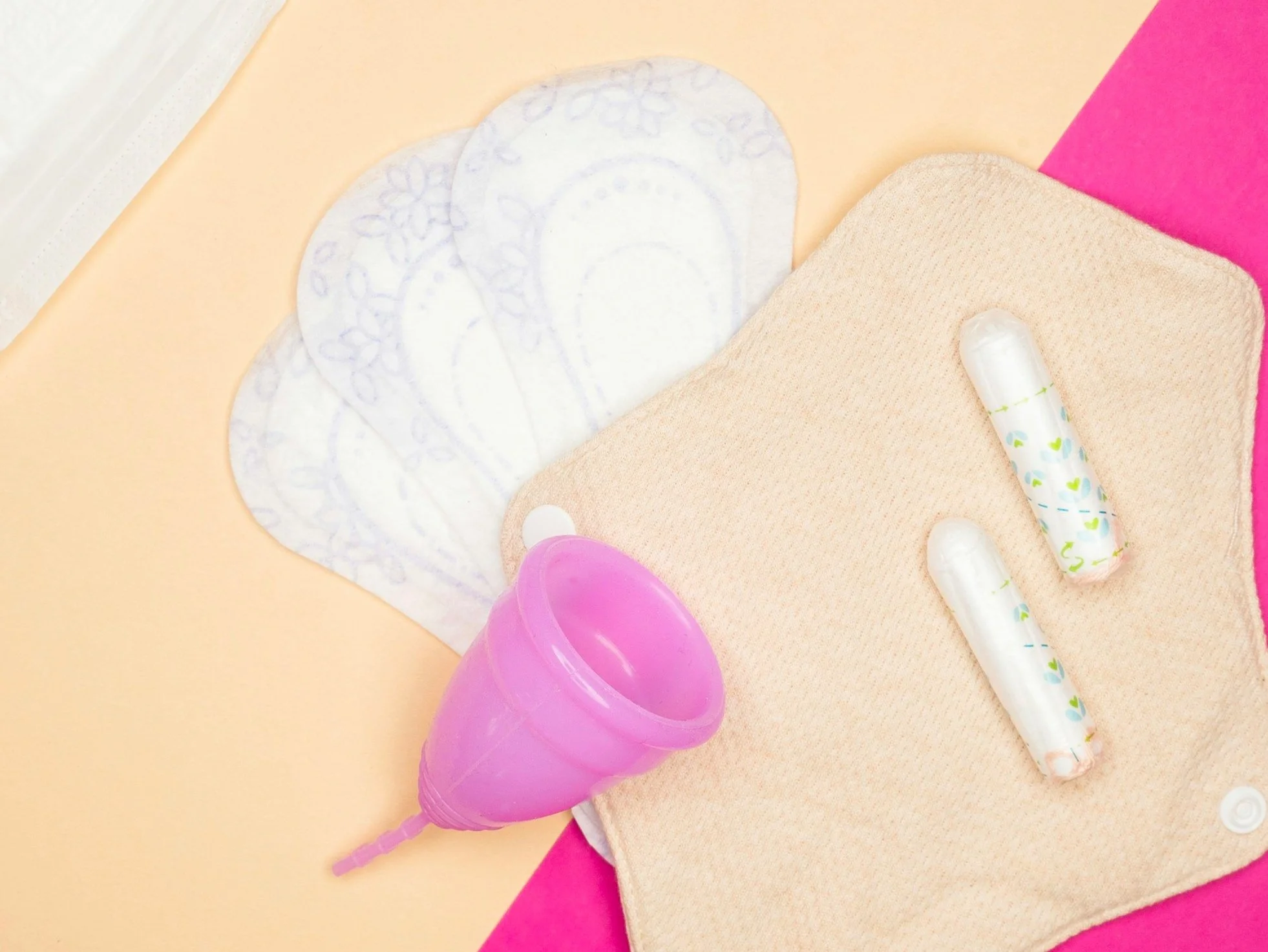Eating for your Menstrual Cycle
Understanding how to eat in sync with your menstrual cycle can greatly enhance your menstrual health and overall wellbeing. Each phase of the cycle—from menstruation to ovulation—has unique hormonal changes that can affect your mood, cravings, and nutritional needs. Let’s explore how to tailor your diet to support your body through each stage.
What are the Different Phases of the Cycle?
The menstrual cycle is typically split into 3 phases and always starts on day 1, which is the first day of your period.
Follicular Phase (approx. days 1-13, includes menstruation)
Ovulatory Phase (approx. days 14-17)
Luteal Phase (approx. days 18-28)
This is based on a 28 day cycle, but should be adjusted based on your own individual cycle length.
What Happens in Each Phase?
Follicular Phase (Days 1-14)
Day 1 of your cycle is the first day of menstruation (think bleeding where you need to use sanitary products rather than spotting). During these few days it is important to rest if you feel you need it and to just generally slow down. It is crucial to focus on replenishing nutrients (such as iron lost during menstruation) and managing symptoms during this time. While some mild cramping can be normal, excessive cramping should be investigated as it could indicate an underlying issue.
During the second part of this phase (after menstruation) estrogen levels start to rise again, and energy levels generally increase. It's a good time to focus on nutrient-dense foods that support muscle recovery and growth, especially if you are putting that energy to good use with some movement or weight bearing exercise during this time.
Ovulatory Phase (Days 15-17)
This phase is marked by a peak in estrogen which stimulates the ovaries to release an egg 24 hours later (ovulation). The timing of ovulation will vary depending on the length of your cycle. Testosterone also increases during this time, leading to increased energy and libido. It’s a time when you might be feeling energised and social (oestrogen can be thought of as our lovely socialising hormone).
Luteal Phase (Days 18-28)
After ovulation, where a mature egg ruptures from its egg sac in the ovaries, the remaining cells of the sac combine to make a small hormone producing gland called the corpus luteum (hence luteal cycle). The corpus luteum is what produces our progesterone during a cycle, which is why having healthy ovulatory cycle is so important to overall health.
As progesterone levels rise during the later half of the cycle (which typically lasts a maximum of 14 days, until the corpus luteum breaks down), you may experience some PMS symptoms in the week or two leading up to menstruation, including cravings, headaches and mood swings. Progesterone is often considered our introvert hormone compared to oestrogen. While it is high, we may feel like we want to avoid socialising, preferringg to stay in with a good book or TV show. It is important to listen to our bodies during this time and slow down if we feel we need to. This phase calls for comforting and satisfying foods.
Just prior to menstruation, both oestrogen and progesterone levels drop which signals the body it is time to shed the uterine lining, and your period begins shortly after. It is normal to feel some fatigue, mild cramping and other mild symptoms during this time, however if your symptoms are impacting your daily life, such as severe cramping that leaves you unable to leave the house, you should seek support for a healthcare provider to work out why.
Nutrients for each phase and rich food sources
During the first part of the follicular phase (menstruation):
Include more iron-rich food sources such as free-range or organic red meat (or small amounts of liver), chicken, fish, eggs, beans, lentils, and dark leafy greens to replace iron lost during menstruation. The heavier your period, the more iron containing foods you may need to eat. Note that (haeme) iron from animal sources is more easily absorbed by the body than (non-haeme) plant sources. Only a small amount of iron is actually absorbed with each meal, so to help this along, eat a vitamin C source with iron rich foods (capsicum, broccoli, strawberries, kiwi fruit, citrus fruits) and keep calcium-rich foods and tannins (such as tea and coffee) an hour or two either side of an iron-rich meal.
Inflammation can be a driving source of stomach cramps or pain during menstruation, so increase your intake of omega-3 fatty acids, which have an anti-inflammatory effect. Rich sources are found mostly in small, oily fish, think salmon, mackerel, anchovies or sardines. Plant sources such as chia seeds and walnuts are also sources of omega-3, however in much smaller amounts than oily fish. It may be beneficial to consider supplementing with fish oil or algae oil if you do not eat fish.
With that in mind, it is also important to reduce your intake of pro-inflammatory foods and drinks, including refined sugars, alcohol, poor quality fats & oils, fried foods and pastries.
Be sure to drink plenty of water and include herbal tea to help alleviate PMS symptoms if present - such as mint for bloating, ginger if nauseous or chamomile for relaxation.
Opt for warm, nourishing meals like soups, stews or slow-cooked meals to provide comfort and warmth. Choose cooked vegetables over raw where possible as they are more easily digested.
Avoid overdoing it at the gym at this time as the body needs rest for the first few days of your period. Stick to gentle exercise such as yoga, pilates or a walk to get the body moving.
If cramps are an issue, try a warm heat pack or hot water bottle over the affected areas.
The second half of the follicular phase:
As our energy picks up, we can focus on including some quality protein and wholegrains in the diet, to support that increase in exercise. Protein sources such as grass-fed beef, chicken, fish, tofu, legumes and dairy products (if tolerated) are great for supporting muscle and hormone building. Wholegrains help provide the B vitamins and other essential nutrients for energy and muscle function, think wholegrain pasta, brown or wild rice, quinoa, millet or barley.
Include more fruit and vegetables to increase antioxidant intake (to nourish ovarian follicles) and reduce free-radicals that can harm follicular development. Focus on fresh produce (preferably organic where possible), and include the colours of the rainbow to maximise nutrient intake. Dark leafy greens (kale, broccoli, spinach, rocket) and berries (blueberries, strawberries, raspberries and blackberries) are particularly loaded with these antioxidants so aim to include these on a daily basis.
Incorporate healthy fat sources like avocados, nuts, and seeds to help balance hormones. Avoid processed trans-fats and excess saturated fats as these can have the opposite effect.
Ovulation:
Include more complex carbohydrates for energy on those continued active days - whole grains, quinoa, and starchy vegetables (like sweet potato, pumpkin). Aside from energy, these foods contain B vitamins and Vitamin A which help support the corpus lute development and boost progesterone levels.
Zinc is a great nutrient for supporting reproductive health and nourishing ovarian follicles, therefore try and include more zinc-rich foods during this time (and in the days before ovulation). Foods like nuts (almonds, cashews) and seeds (pumpkin, flax) and chickpeas are all great sources.
Again, antioxidant intake during this time is important for follicular development and ovulation. Continue to eat a rainbow variety of colourful fruits and vegetables on a daily basis to maximise antioxidant status. Try to aim for 5 serves of veg and 2 serves of fruit each day (1 serve = 1/2 cup of starchy or non-starchy vegetables, 1 cup of salad, 1 medium sized fruit or 2 small ones).
Nutrients for Luteal Phase
To help alleviate PMS symptoms, such as cramping, bloating and migraines, include more magnesium-rich foods on a daily basis, such as dark chocolate, nuts (Brazil nuts, almonds, cashews), pumpkin seeds, leafy greens, avocado and edamame).
Fibre is important to keep the bowels moving and remove oestrogen from the body. Oestrogen is removed via stools, so if you are constipated, there is more chance of this oestrogen being reabsorbed back into the body. Fibre sources include whole grains, legumes, vegetables and fruit. Fibre also helps to stabilise blood sugar levels and manage cravings by helping us to feel fuller for longer.
Increase your intake of cruciferous vegetables (broccoli, cauliflower, cabbage, kale). These contain a compound called idole-3-carbinol which supports the liver to detoxify oestrogen so it can be removed from the body through our bowels.
When increasing fibre, it is also important to keep fluid intake up to help the bowels along and to reduce the risk of constipation. Drink filtered water where possible. Consume foods with a high-water content such as cucumbers, melons, and soups to combat water retention and keep hydrated.
Holistic Tips for Optimising your Cycle
Listen to Your Body: Cravings and energy levels will fluctuate; respond to your body’s needs rather than adhering strictly to a plan.
Regular Meals: Maintain balanced meals with protein, healthy fats, and fiber to keep blood sugar levels stable.
Mindful Eating: Pay attention to hunger cues and eat mindfully to promote digestion and satisfaction.
Move with your cycle: try to exercise differently depending on what stage of the cycle you are in – the follicular phase means you may feel more energised to do harder or longer workouts, and being in the later end of the luteal phase may mean resting more and including some gentle walking, yoga or pilates to your training schedule. Consult an exercise physiologist or personal trainer that specialises in this area for more information.
In Summary
Eating in alignment with your menstrual cycle can empower you to take control of your health and well-being. By understanding your body's needs during each phase, you can make informed choices that enhance energy, mood, and overall health. Whether you're nourishing your body during menstruation or fueling it for ovulation, the right foods can make all the difference. Embrace the rhythm of your cycle, and enjoy the journey toward better health!

